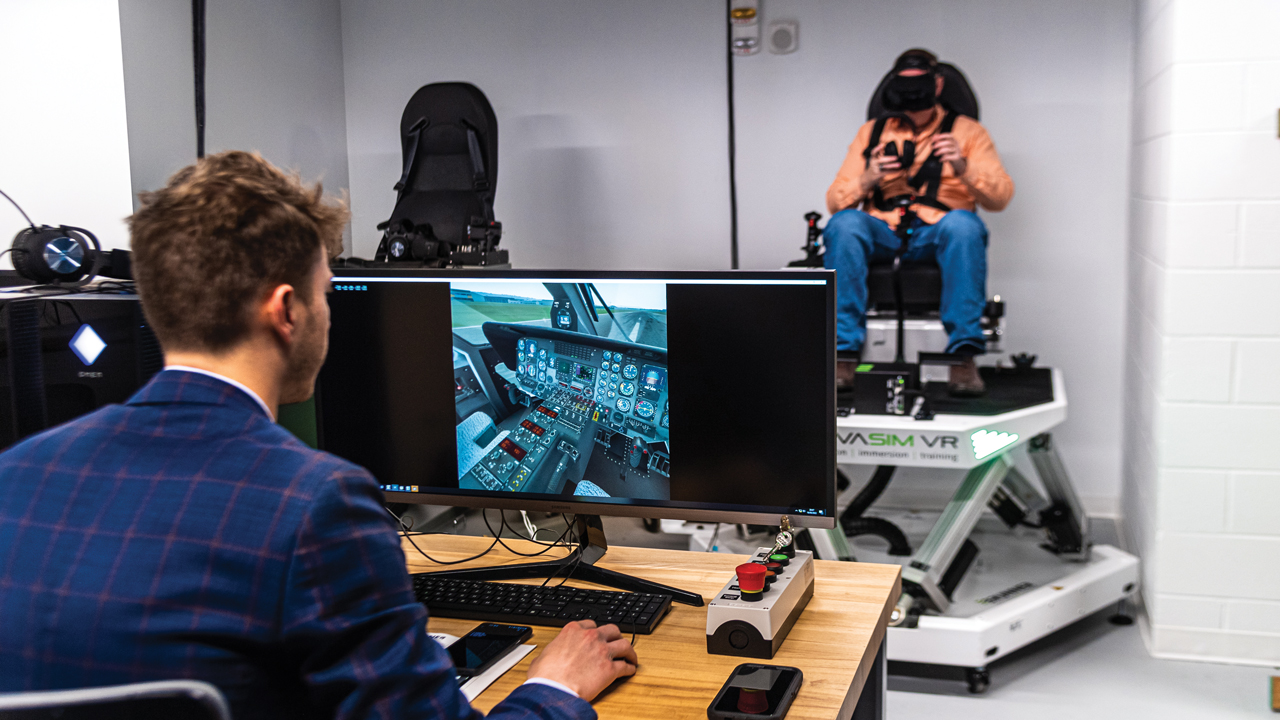Flight simulators propel aerospace research
By Joe McAdory

Umberto Saetti, assistant professor in aerospace engineering, was granted a $510,000 Young Investigator Award from the Office of Naval Research for his study, “Linearized High-Fidelity Aeromechanics for Extended Reality Simulation and Control of Shipboard Interactions.”
The purpose of the project is to find solutions that will preserve human life and prevent millions of dollars in aircraft from being destroyed.
The problem: heavy rotor downwash which, when interacting with the ship deck, hull or water surface, recirculates into the rotor, causing increased power demands and adverse handling effects.
“The ability to replicate these interactions in real-time flight simulations could help supplement the creation of Launch and Recovery Envelopes (LREs) aboard naval vessels. This virtual approach to LRE certification could be used to replace potentially unsafe live simulations during a dynamic interface period,” said Saetti.
Saetti offered three components to the proposal: modeling, control of the downwash interactions and pilot simulations in full-body haptic feedback suits.
“Once we know the interactions that occur, you will basically use a procedure called linearization. We’re making these complicated relationships between the rotorcraft and ship deck much easier, mathematically speaking, so that they’re constituted by simple algebraic relationships,” he said.
Saetti is no stranger to helicopter research for the U.S. military. His study, “State-Variable Implementation and Linearization of Simulations with Multi-Disciplinary Aeromechanics,” with the Vertical Lift Research Center of Excellence, earned a five-year, $571,000 contract last summer.
Researchers

